Our BnB here is another place in the country. 2 Englishmen (Steve and Damian) have spent about 3 years renovating an old stone farmhouse to turn it in to a BnB. Our bedroom was clearly once a very big room with a fireplace. The fireplace has been removed and the mantle is a feature in the ensuite bathroom, that has been separated from the original room. There are 4 guest rooms, but there are currently only one other couple here as Steven and Damien said they were deliberately having a quiet time for a couple of weeks before the busy season.
We asked about the closures likely on Bastille Day, known here as National Day
. They checked and told us all shops would be closed and museums might have reduced hours. There would be fireworks in the nearest big town at about 11pm this evening. We decided to visit WW2 places today and Mont St Michel on the 14th and think about the fireworks tonight.
Downstairs is a guest lounge with the table that breakfast is served at. We had spotted on the wall an 'Orders of the Day' and a set of medals and asked about them. Steve’s Great-grandfather had received the Military Medal and his name, Corporal Bradley, is on the Orders list. Unfortunately he had also suffered from shell shock but was simply seen as ‘changed and unpleasant’ on his return. When he died his widow was burning all his possessions but fortunately his son saved these 2 items from the fire. It is nice he is remembered as they said a lot of guests ask about the display.
After eating a stack of pancakes for breakfast we set off for Sainte Mere Eglise. This is the town where John Steele hung on his parachute (on D-Day) from the church steeple for 2 hours pretending to be dead. There is an effigy of him on a parachute on the church roof although we did hear a guide later say that he was actually hanging on the rear side.
We went first to the church and had a quiet look around. For once John was happy for me to take a photo of the stained glass because there was a special window showing paratroopers in the sky
. It had been donated by the 101st Airborne Divisor known as ‘the Screaming Eagles’, John Hoyman’s division. John Hoyman is an American family friend who first met Ted and Liz through gladiola growing. On a visit to NZ John happened to ask him about the war and he told him a lot more than his wife said most of the family knew.
We then went to the museum. John was very keen to see one of the gliders used as part of the attack. They had one on display and it is very frail with just canvas over steel frames. They had a number of pictures of crashed ones, some with the comment that it had still been a successful landing because the open cockpit shows the men and equipment had been unloaded.
There was a lot of donated memorabilia and as is often the way the human stories are those we remember. They had a photo of the front of a Life magazine of the day and the story of the man on the cover. He said he panicked on landing and cut away his parachute but also his bag of spare clothes and food
. His wife had said she was pleased he was shown with his wedding ring on as it was said that soldiers took off there rings when going to Europe. The other one that struck home was a dollar bill. Three platoon leaders had divided a bill into three parts before the raid – when they reunited years later there were 2 parts as the third person had died in the raid.
The GPS took us again on back roads to get to Utah Beach. There were a number of low slung sports cars on the rod, some with a hamper on the back. It seemed very French although they must have struggled with some of the speed bumps. We kept seeing bunkers on the side of the road, which reminds us how widespread the forces were.
We looked at the various memorials at Utah Beach. I think I was expecting there to be one but there were a number honouring various groups. One was built at a bunker which had been a German base and then was taken over and used as an American base
. We walked down to the small bit of beach that was exposed. There were a lot of other people just walking quietly around. A number of streets were named in honour of the fallen.
We then made our way to Omaha Beach. There was the main memorial and a new statue in the sea. There were a number of plaques about the new statue explaining its construction, its significance and with poems about the battles nearby.
The sculpture was called Les Braves and consists of 3 elements.
The Wings of Hope - so that the spirit which carried these men on June 6 1944 continues to inpire us reminding us that together its always possible to change the future.
Rise,Freedom! So that the example of those who rose against barbarity helps us remain standing strong against all forms of inhumanity.
The Wings of Fraternity. So that this surge of brotherhood always reminds us of our responsiblity towards others as well as ourselves
We were about to leave when we realised a ceremony was starting
. A woman with a tricolour sash spoke in French and English welcoming a group of US schoolchildren with a special ceremony. She thanked their grandparents on behalf of the region for their role in freeing France from the Germans and saying that this will never be forgotten. Then 8 flags were raised by pairs of the children helped by locals while national anthems were played. First Norway, then Belgium, the Netherlands, Poland, Canada, the UK and finally the USA followed by France. Then 2 students accompanied the speaker to put flowers at the foot of the memorial. We had noticed 2 bouquets there earlier so wonder if this is a special way to welcome visiting school groups. At the end they were all told to take sand from the beach in a bottle and maybe they could add sand from other beaches in future as a memory. It was very moving and we felt special to have been there.
We then went further down the road, to find another memorial at a bunker, then on to the main US military cemetery in the area
. The US government has the use of the land rent free from the French government. We went into the Information Centre first which meant we had to go through security. This area had a number of information panels with a time line to D Day. We were struck by a quote from Churchill, ‘Truth is so precious it must be protected by a bodyguard of lies’. As we went out to the cemetery the list of the dead was being read out. We went past various memorials to brothers, the missing etc then out to the cemetery. The row on row of crosses was very moving but as always we especially noted the ‘Known only unto God" crosses. The other two that struck a chord were the one with a wreath in the front and the Polish headstone which was not a cross. We did not do the tour but there was one that also explained the time line and various battles.
Our next stop was at the memorial to the First Division, in part because there was a cache there. We parked near the beach and walked up the hill to the memorial. It had the names of all the dead with those who had received the Medal of Honour recorded in gold.
After this we looked for the Arromanches 360 museum which we knew was in a hill overlooking the town. It had been recommended to us by a guest in the BnB at Loire. It was a struggle to find as we had no directions, so all we could do was look for the town. It turned out to be a big seaside town and was very crowded
. By a fluke I saw a sign saying 360 cinema – which was the thing we wanted, After all this it was OK (but not great) so a bit disappointing. There was film taken during the war with shots of the places as they are today. The contrast between the two was striking though.
On our way back we drove through Bayeux so had to sidetrack to see the tapestry. The hardest part again was to find the site. The silly thing was that we later found there was a cache there and if we had looked for that first we would have found it more quickly. The audio guide did move us through fairly quickly but we could still admire the workmanship. It is almost 70m long and of course over 900 years old. It is really amazing that it has survived in such good condition for all that time. We did think of Pat Taylor who would have had a greater appreciation of the work involved. The lower panels also added to the stories and the final panels had many dead bodies which tied in so much with the days other visits.
We had tea in the local town then returned to sort out the blog and upload photos. We had considered going back to see the fireworks at 11pm but bed was too tempting.
The Normandy Beaches
Tuesday, July 13, 2010
 Méautis, Basse-Normandie, France
Méautis, Basse-Normandie, France
Other Entries
-
39On the road to La Marche
Jun 2617 days prior Cupramontana, Italyphoto_camera6videocam 0comment 2
Cupramontana, Italyphoto_camera6videocam 0comment 2 -
40Settling in at Cupramontana
Jun 2716 days prior Cupramontana, Italyphoto_camera11videocam 0comment 0
Cupramontana, Italyphoto_camera11videocam 0comment 0 -
41Sun, sand and Sirolo
Jun 2815 days prior Cupramontana, Italyphoto_camera7videocam 0comment 0
Cupramontana, Italyphoto_camera7videocam 0comment 0 -
42Discovering Umbria
Jun 2914 days prior Cupramontana, Italyphoto_camera6videocam 0comment 0
Cupramontana, Italyphoto_camera6videocam 0comment 0 -
43Taking notes in Fabriano
Jun 3013 days prior Cupramontana, Italyphoto_camera3videocam 0comment 0
Cupramontana, Italyphoto_camera3videocam 0comment 0 -
44Mountain Monastery
Jul 0112 days prior Cupramontana, Italyphoto_camera11videocam 0comment 0
Cupramontana, Italyphoto_camera11videocam 0comment 0 -
45A lazy Le Marche day
Jul 0211 days prior Cupramontana, Italyphoto_camera5videocam 0comment 0
Cupramontana, Italyphoto_camera5videocam 0comment 0 -
46Welcome to Florence
Jul 0310 days prior Florence, Italyphoto_camera10videocam 0comment 0
Florence, Italyphoto_camera10videocam 0comment 0 -
47Discovering Florence
Jul 049 days prior Florence, Italyphoto_camera12videocam 0comment 1
Florence, Italyphoto_camera12videocam 0comment 1 -
48Tunnels and tolls
Jul 058 days prior Villarodin-Bourget, Francephoto_camera4videocam 0comment 2
Villarodin-Bourget, Francephoto_camera4videocam 0comment 2 -
49Ascending the Alps
Jul 067 days prior Villarodin-Bourget, Francephoto_camera29videocam 0comment 0
Villarodin-Bourget, Francephoto_camera29videocam 0comment 0 -
50From mountains to motorways
Jul 076 days prior Toulouse, Francephoto_camera6videocam 0comment 0
Toulouse, Francephoto_camera6videocam 0comment 0 -
51The fleas that tease....
Jul 085 days prior Toulouse, Francephoto_camera9videocam 0comment 2
Toulouse, Francephoto_camera9videocam 0comment 2 -
52Back to Basics
Jul 094 days prior La Bessede, Francephoto_camera11videocam 0comment 0
La Bessede, Francephoto_camera11videocam 0comment 0 -
53Living on the River
Jul 103 days prior Loches, Francephoto_camera11videocam 0comment 0
Loches, Francephoto_camera11videocam 0comment 0 -
54Chateaus and caches
Jul 112 days prior Loches, Francephoto_camera14videocam 0comment 0
Loches, Francephoto_camera14videocam 0comment 0 -
55A rewarding search
Jul 121 day prior Méautis, Francephoto_camera6videocam 0comment 0
Méautis, Francephoto_camera6videocam 0comment 0 -
56The Normandy Beaches
Jul 13 Méautis, Francephoto_camera21videocam 0comment 0
Méautis, Francephoto_camera21videocam 0comment 0 -
57Mont Saint Michel and Battlefields
Jul 141 day later Méautis, Francephoto_camera18videocam 0comment 0
Méautis, Francephoto_camera18videocam 0comment 0 -
58Biking in Bruges
Jul 152 days later Bruges, Belgiumphoto_camera10videocam 0comment 3
Bruges, Belgiumphoto_camera10videocam 0comment 3 -
59Bruges and beyond
Jul 163 days later Bruges, Belgiumphoto_camera27videocam 0comment 0
Bruges, Belgiumphoto_camera27videocam 0comment 0 -
60Flander's Fields
Jul 174 days later Bruges, Belgiumphoto_camera21videocam 0comment 1
Bruges, Belgiumphoto_camera21videocam 0comment 1 -
61Living by the canal
Jul 185 days later Schoorldam, Netherlandsphoto_camera26videocam 0comment 0
Schoorldam, Netherlandsphoto_camera26videocam 0comment 0 -
62Driving in the North Sea?
Jul 196 days later Bremen, Germanyphoto_camera9videocam 0comment 2
Bremen, Germanyphoto_camera9videocam 0comment 2 -
63Discovering Bremen with Peter
Jul 207 days later Bremen, Germanyphoto_camera27videocam 0comment 1
Bremen, Germanyphoto_camera27videocam 0comment 1 -
64Checking out Hamburg
Jul 218 days later Bremen, Germanyphoto_camera18videocam 0comment 0
Bremen, Germanyphoto_camera18videocam 0comment 0 -
65A trying day to Trier
Jul 229 days later Trier, Germanyphoto_camera3videocam 0comment 0
Trier, Germanyphoto_camera3videocam 0comment 0 -
66The Chartres Illuminations
Jul 2310 days later Chartres, Francephoto_camera16videocam 0comment 0
Chartres, Francephoto_camera16videocam 0comment 0 -
67Arriving in Paris
Jul 2411 days later Paris, Francephoto_camera6videocam 0comment 0
Paris, Francephoto_camera6videocam 0comment 0 -
68Our Tour de Paris
Jul 2512 days later Paris, Francephoto_camera17videocam 0comment 1
Paris, Francephoto_camera17videocam 0comment 1 -
69One evening in Paris
Jul 2613 days later Paris, Francephoto_camera12videocam 0comment 0
Paris, Francephoto_camera12videocam 0comment 0 -
70Arriving 'home' in London
Jul 2714 days later London, United Kingdomphoto_camera1videocam 0comment 0
London, United Kingdomphoto_camera1videocam 0comment 0 -
71The geocaching geeks of Gunnersbury
Jul 2815 days later London, United Kingdomphoto_camera8videocam 0comment 0
London, United Kingdomphoto_camera8videocam 0comment 0 -
72Goin' to the pikshers and kulture and stuff
Jul 2916 days later London, United Kingdomphoto_camera9videocam 0comment 0
London, United Kingdomphoto_camera9videocam 0comment 0 -
73'Oranges and Lemons...'
Jul 3017 days later London, United Kingdomphoto_camera9videocam 0comment 2
London, United Kingdomphoto_camera9videocam 0comment 2 -
74Locks and castles
Jul 3118 days later London, United Kingdomphoto_camera15videocam 0comment 0
London, United Kingdomphoto_camera15videocam 0comment 0

 Méautis, Basse-Normandie, France
Méautis, Basse-Normandie, France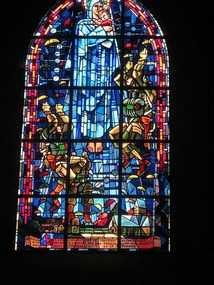
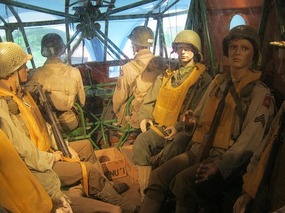

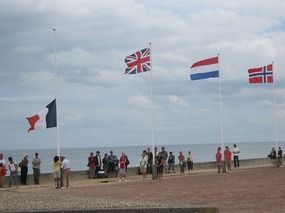
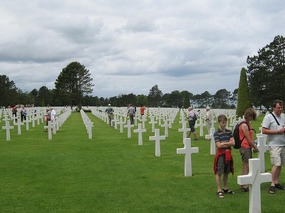
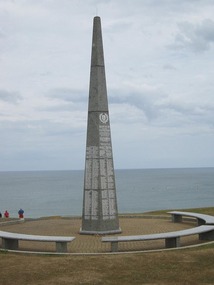
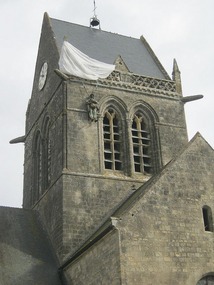






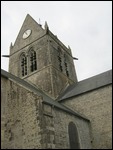
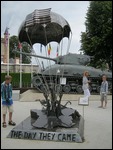
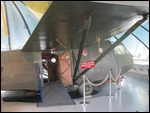
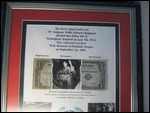
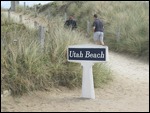
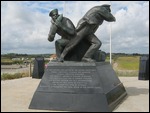
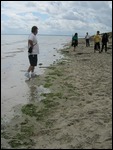
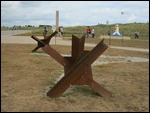
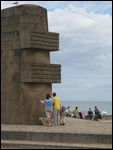
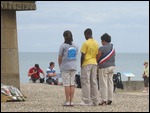
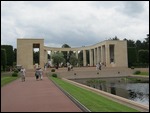
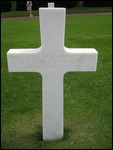
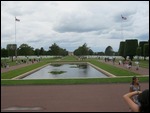

2025-05-23